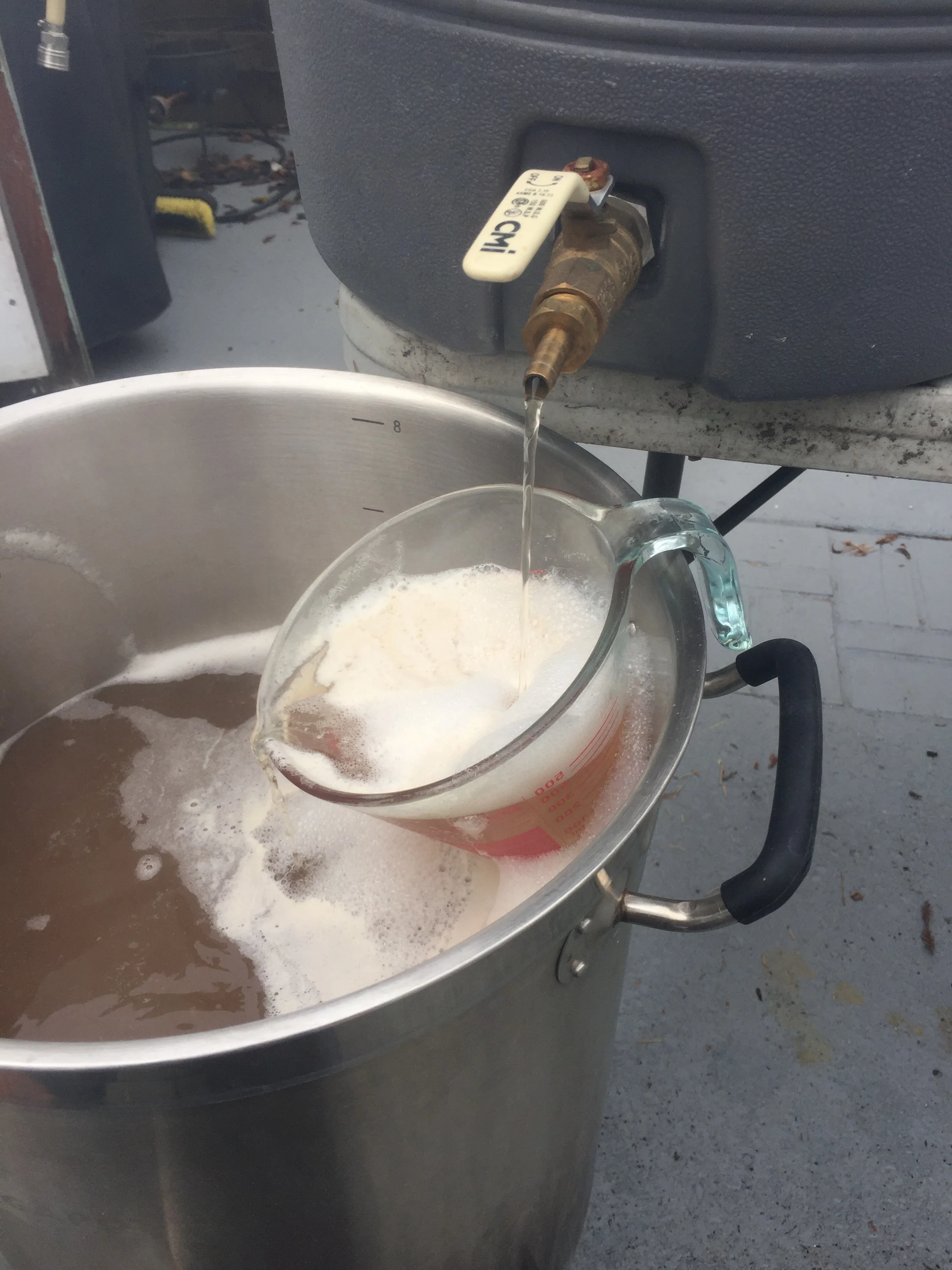Time For Some Serious Talk
With any luck this post will not come across as stream-of-consciousness. Mouth diarrhea with enough wit may be good for standup comedy but probably not for a blog. It always sounds so good in your head but to the reader it just comes across as A Beautiful Mind. In any case I will watch my punctuation and avoid any run on sentences because no one likes run on sentences especially when they are about things that some readers don’t really know about and uses jargon without definition or context, and such. See what I did there?
The Intermediate-Advanced Homebrewer Dilemma
For a while now I’ve been trying to talk myself in (or out depending on how I’m looking at it) to upgrading to a pilot-batch level, almost nano brewery, type system. Frequently I’ll get frustrated with my current setup and mish-mashed equipment and get jealous of what some other homebrewers have out there. The anger phase. Next I’ll talk a big game (normally to Jaimie while she’s scrolling Instagram) about getting a real three-vessel, fixed position, pump-driven, bells-and-whistles home brewhouse. The bargaining phase? Then I will almost immediately talk myself out of spending the money because at the end of the day we’re talking about a several thousand dollar investment. The acceptance phase. Granted I’m in this for the long haul but pulling the trigger on a big ticket item is difficult for someone who really enjoys looking at his savings account.
The other confounding factor is my desire to open a brewery. Not tomorrow, but before my kid is in middle school would be nice. So if I’m going to think about funding a commercial brewery do I need to spend the money on this type of home/nano/pilot system? I could use it in the meantime for plenty of recipe development and testing. But then would I actually use it if I had a commercial brewery or would I be one of those trying to get rid of it on the cheap? These advanced systems hold their value decently well and maybe I should purchase it in case the brewery never pans out. But. But. But. Talk. Talk. Talk. You see where this is going. You see how my brain operates. Frightened yet?
And then there is social media. You want what others have. It’s part keeping up with the Jones’, part FOMO, and part old fashioned jealousy. I recently started following a guy who got into brewing in 2017 (which feels like about five minutes ago in brewing years) and he went from an introductory all grain setup, to a pilot system, and new stainless conical fermenters in that amount of time. Bonus, he has this amazing finished garage that appears to be larger than my entire house. Also his wife is a photographer (reminder: I really need to get Jaimie a new camera). Now, maybe his beer tastes like shit and it’s all a facade but I’m still allowed to be jealous, right?
The Contenders
Without any additional bloviating lets break down the options I’ve strongly considered and the characteristics of each.
Sabco BrewMagic: 30 gallon capacity (so 20-25 gallon batches). About $8,500 new and $3,000-4,500 secondhand. Gas fired (propane or natural). The system is old school and tried and true (funfact: Dogfish’s original brewhouse was a BrewMagic). Tri-clamp (TC) connections. Legit digital interface. Recirculating Infusion Mash System (RIMS).
Final Analysis: A good value if secondhand and in good condition since it is turnkey and proven. Could serve as a long term pilot system in a commercial operation.
SS Brewtech 10 gallon system: $3,600. Electric. Includes three vessels and stainless chronical fermentor. TC connections. No PID control panel. Would need to design/build or purchase control panel separately.
Final Analysis: Pretty kit and I’ve heard good reviews on the quality of their products. Bonus: they’re local to me. But still would require equipment, labor, and expense to make it as automated as the others considered.
Spike Brewing: 10 gal system: $4,750. Electric. Nice PID control panel. TC/quick disconnect connections.
Final Analysis: Pricey. More, I would have to upgrade my home electrical panel to utilize it. Also, I haven’t heard much as far as reviews, good or bad.
The Electric Brewery: $2,600 estimate. DIY. Good learning experience. Potentially terrible learning experience.
Final Analysis: As my good friend Ryan would wisely and succinctly say, “fuuuuck that.” I agree, I want to be a brewer not a brewhouse engineer. Plenty of people out there would get off on building something like this for way cheaper than a retail kit. I on the other hand would probably end up in the hospital.
Upon Further Review
Ultimately the fact that the BrewMagic has been around forever, is mobile, and can be used indefinitely in either a homebrewing or commercial setting really sells me. There are some that swear by Heat Exchange Recirculating Mash Systems (HERMS) systems so there is no possibility of scortching your wort. Others have really jumped on all electric systems. For some it may come down to energy costs of electricity versus gas if you brew a lot. For me the gas, RIMS, and digital interface of the BrewMagic suits my needs and style.
I’ve been leaning towards a secondhand BrewMagic for over a year now and I recently contacted someone in Southern California who is selling a 2014 model for $3k. I expect to go view it and ask questions at the end of the month. Maybe being there in person, on the spot, will make me pull the trigger once and for all. Until then, I’ll keep up the conversations with my inner monologue and let you all know if it has something important to say.
Happy brewing.
Comment below if you’ve been spinning your wheels on next steps in the homebrewing equipment adventure.
“Sweet setup
amiright??”
“Yeah, awesome dude. That’s some world-class engineering…”
